Many people recall their summer vacation at a children’s campsite with nostalgia. Campfire songs, first love, horror stories told under the blankets after “lights out” because of bed time. But few have heard of wine camps. This is a recreation with wine tastings, walks in the vineyards and gastronomic experience that our correspondent would like to share with our readers.
A camp for hedonists
Wine tourism is not a new type of travelling. For a long time, those who are hedonistic and appreciate the joy of living find France, Italy, South Africa and Georgia to be the favorite places. The Russian wineries are just beginning to gain momentum and attract tourists. The Covid-19 pandemic played an important role in this. With the borders closed, the Russians saw that the wineries are glad to offer them a range of services in their native land that are no worse than the services abroad.
At the moment, the main destinations for wine tourists are the Krasnodar Territory, the Rostov Region and the Krymsk District. Different wineries offer a rich choice of services to their visitors. In some places, you can spend a few hours, which is enough for walking through the vineyards, getting an idea of the production process, and take part in tastings. Larger farms have all the conditions for a longer visit. There are hotels, restaurants, museums, walking areas at the farms. At the same time, you can become an enotourist both individually and as part of a group.
Ii should be noted that now the choice of organized tours to the Russian wineries is quite wide. We got to know this from our personal experience when we decided to spend a weekend in the Krasnodar Territory. After considering several options, we chose the Brookwinecamp tour organized by the owners of a wine bar in Anapa in cooperation with the “Hills and Rock” winemaking project. It was interesting that these people set their task not just to attract tourists, but to promote wine culture and support domestic winemakers in every possible way. Their Brookwincamp regularly hosts wine tastings, holds meetings of wine connoisseurs, makes films about these and other events.
Kuban high style
During 4 days at the campside, we managed to visit 7 wineries. There were both large farms and quite new small ones among them, but all were rather promising projects. In some wineries, we had time just to have dinner and taste their wines, in others, we could see the wine production process.
The first farm we visited was the Château de Talu in Gelendzhik. The winery was founded back in 2005, but the tourist destination is only gaining momentum now.

Coming closer to Château de Talu, we saw a palace towering over 100 hectares of fruit-bearing vineyards and the Black Sea. There is a park with a fountain and statues at the entrance to the building.
Our group was lucky to visit the farm on the eve of a large-scale event to celebrate the opening of a restaurant and a tasting complex at the palace.
Inside the complex, there are many rooms, including a tasting room, restaurant, rooms for banquets and other events, wine shops and even a small museum. The hall decorated in an oriental style houses the winery owner’s personal wine collection with dozens of Château Mouton-Rothschild bottles. The oldest bottle of wine dates back to 1900, it is a real treasure for wine connoisseurs. By the way, many luxury interior items are antique.
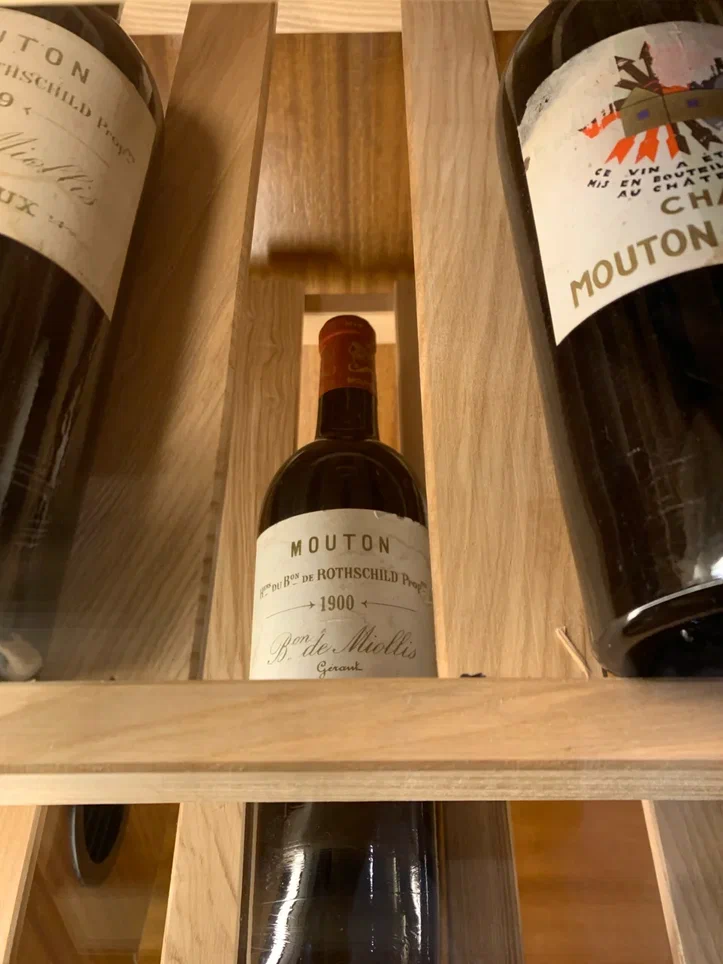
Accompanied by a guide, we watched the wine production process. The seasonal character of the wine tourism is of prime importance. We arrived at the height of the harvest time, so some of the workshops were closed to visitors. But we were lucky to see the grape receiving process.
The farm grows vines of traditional Bordeaux varieties: Cabernet Sauvignon, Cabernet Franc, Merlot, Syrah, Chardonnay, Sauvignon Blanc, Muscat and Semillon, as well as the Russian native autochthon Krasnostop variety.
The cut bunches of grapes come in large boxes to the department where they are sorted and sent to the wine-pressing equipment.
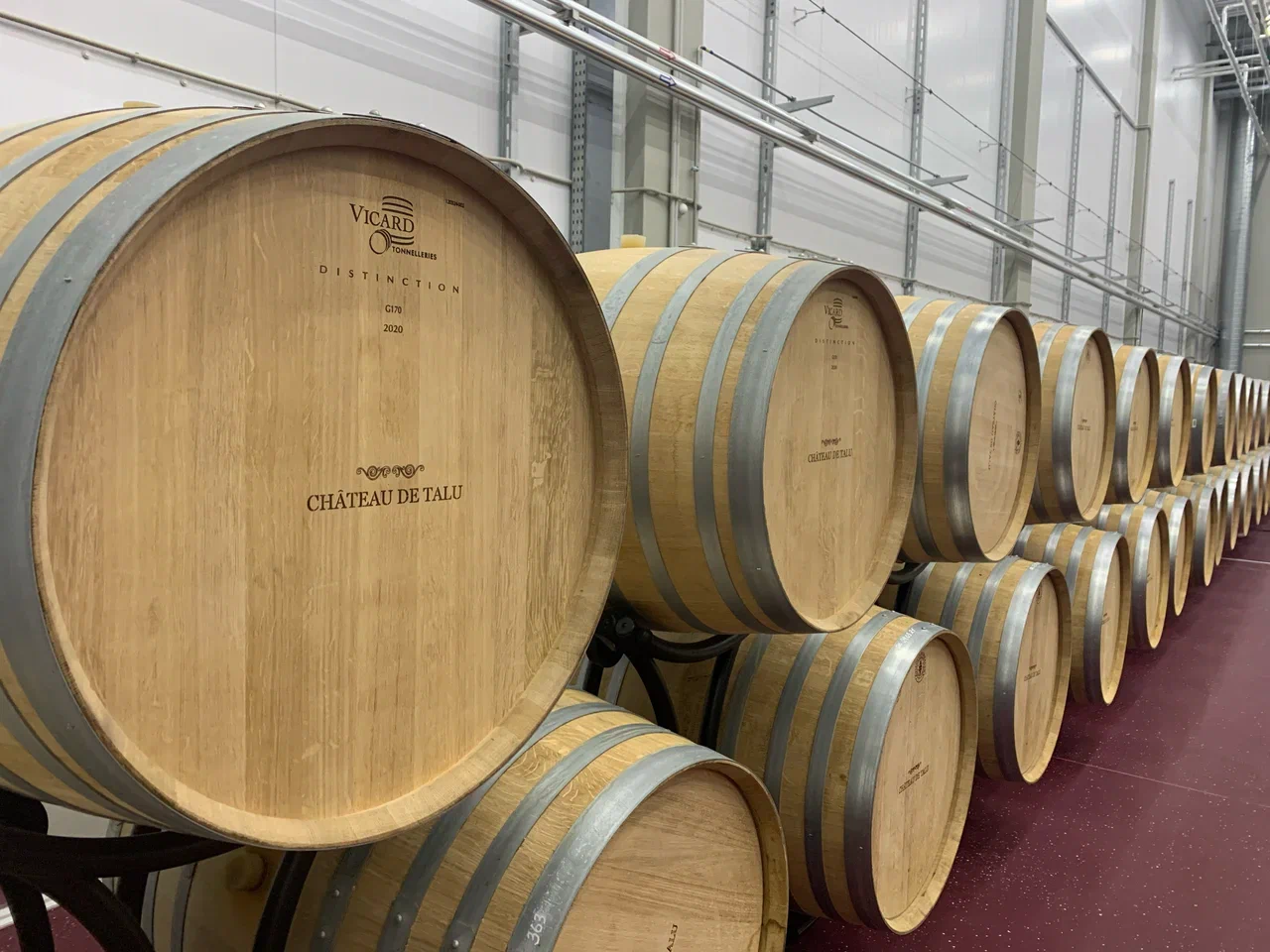
In addition, the guide showed us the French oak barrels, in which the wines are aged, and the giant fermentation tanks.
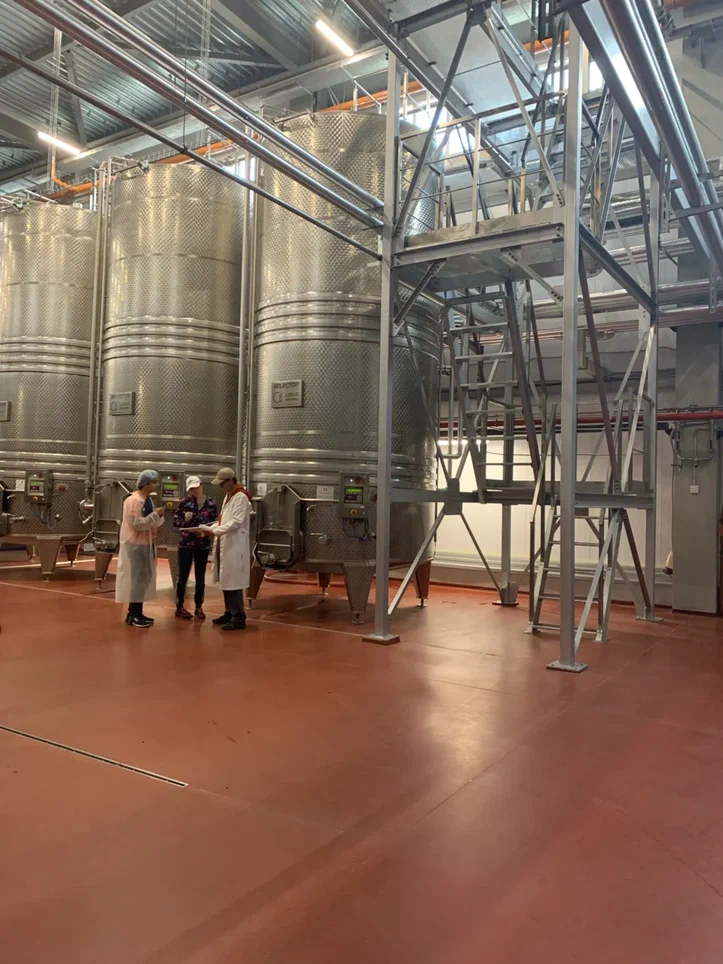
“Little Tuscany”
The Shumrinka winery was the second one we visited. This small private winery is in the village of Gai-Kodzor, the Anapa District. Seventeen grape varieties are grown here, including Merlot, Malbec, Syrah, Pinot Blanc, Malvasia, and Marselan. It is noteworthy that all weeds are pulled out by hand. This allows the winemakers to abandon the chemical treatment of the vines.
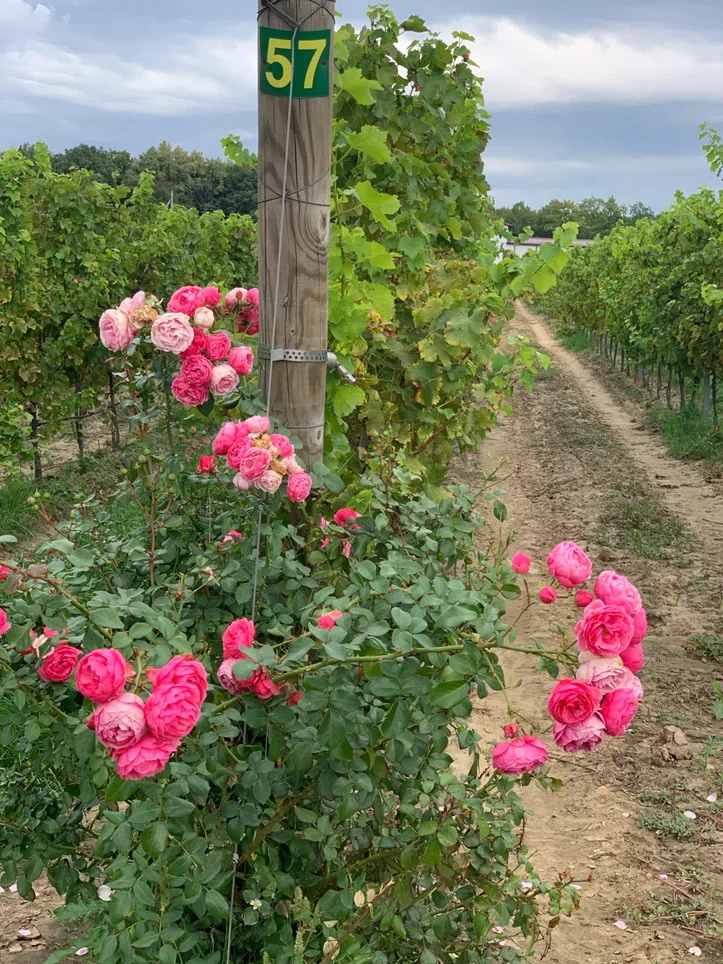
The wines are aged in special metal tanks, in French and US oak barrels (baked to various degrees), and even in ceramic amphorae.
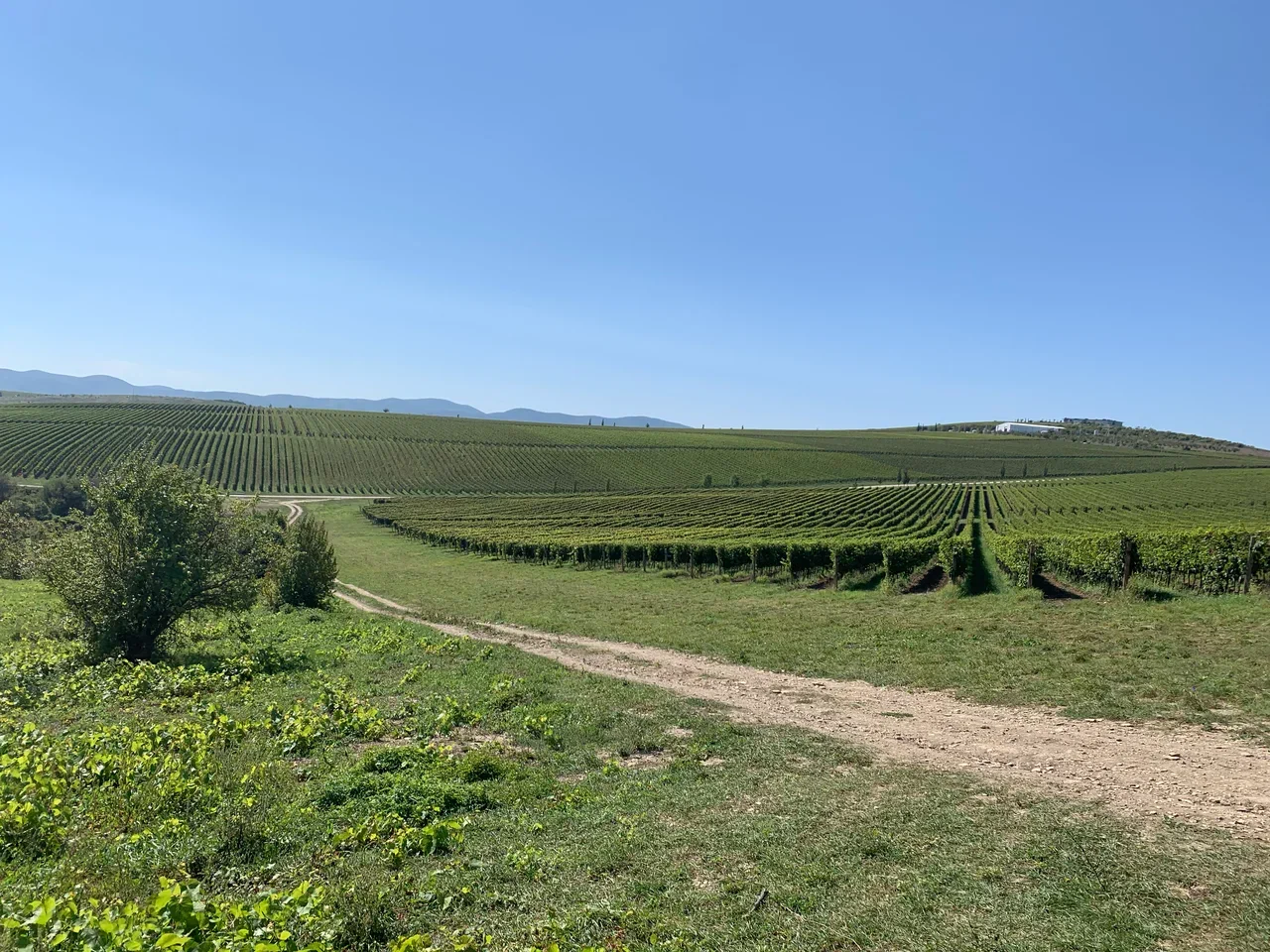
The hosts are just getting ready to receive their guests. They plan to organize excursions to their vineyards and cellars, give lectures on various themes, and hold tastings. But even now, you can visit Shumrinka and taste the wines. To do this, a special tent is equipped on one of the hills where you can enjoy an amazing panoramic view of the vineyards.
The winery Director General told us that there were also foreigners among their guests. This is not surprising, since this year, Shumrinka received 97 points out of 100 at the prestigious international competition Decanter World Wine Awards. It is noteworthy that the consumers find the wines of this winery quite affordable.
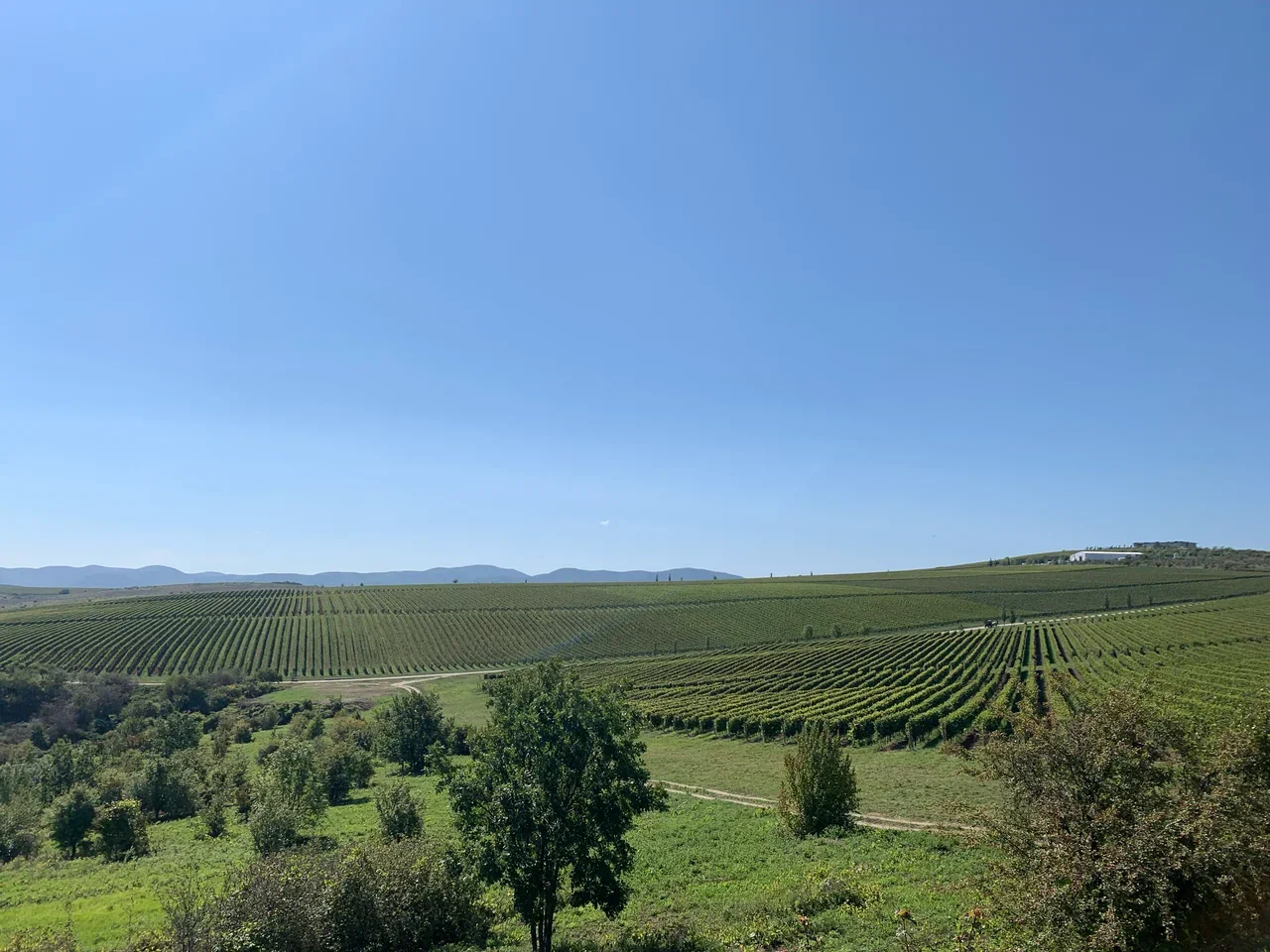
In the future, Shumrinka plans to acquire a glass-sided all-weather pavilion. In the meantime, it is worth coming here to walk through the vineyards, taste delicious wines and imagine yourself somewhere in Tuscany.
Snails and “punk” winemakers
The gravity winery Chateau Pinot is located on the picturesque slopes of the Mount Koldun in the southern part of Novorossiysk. It is a big agritourism complex with a restaurant, snail farm and a tourism centre.
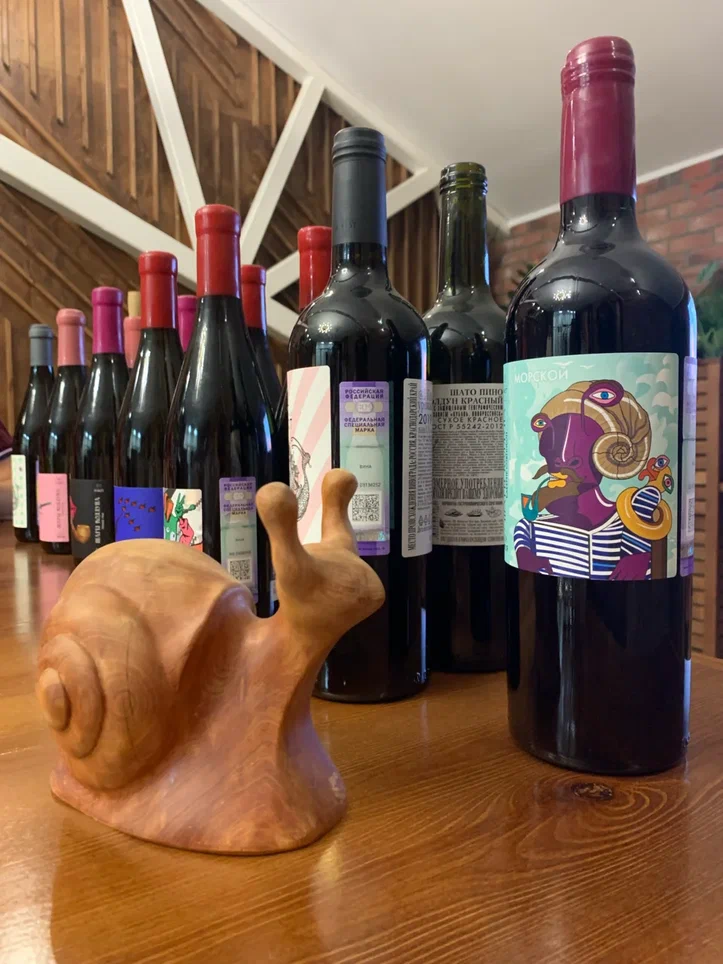
At the moment, the farm has more than 111 hectares of vineyards at altitudes from 180 to 270 metres above sea level. All the seedlings on the farm are from renowned European nurseries.
Currently, 15 grape varieties are grown here, including Chardonnay, Pinot Noir, Pinot Gris, Syrah, Cabernet Sauvignon, Marselan, Viognier, Merlot, Riesling Rhine, Cabernet Franc, Sauvignon Blanc, Sangiovese, Petit Verdot, Pinot Blanc, and Semillon.
The grapes are harvested exclusively by hand and in several stages. Additionally, the crop is sorted in the field. Then, the grapes are delivered for processing. This must be done very quickly, so the time between harvesting and delivery of grapes for processing is less than one hour.
The winery was originally built to be able to receive tourists. Therefore, the guests do not just walk between fermentation jars and tanks, but look at the wine production from special balconies. And there is something to see, indeed, as there are more than a hundred steel tanks, pneumatic and basket presses, grape sorting systems, crushers, an automatic bottling line, and much more. There is even a laboratory at the winery.
The guests can also look at the tanks in which the wines are aged. The winery uses 225-litre oak barriques and 3,000-litre oak barrels. All of them are made in France, Italy and Portugal.
In addition to wine entertainment, tourists can visit a snail farm, a bee-garden, and a bird nursery. There is also a restaurant serving house specialties, and a hotel complex is under construction so that their tourists could spend several days at the winery.
At the restaurant, we tasted not only wines, but also snails, which are the symbol of the winery. They are served here with three different sauces. They taste no worse than the French ones. In addition, the guests can try a snail ice cream.
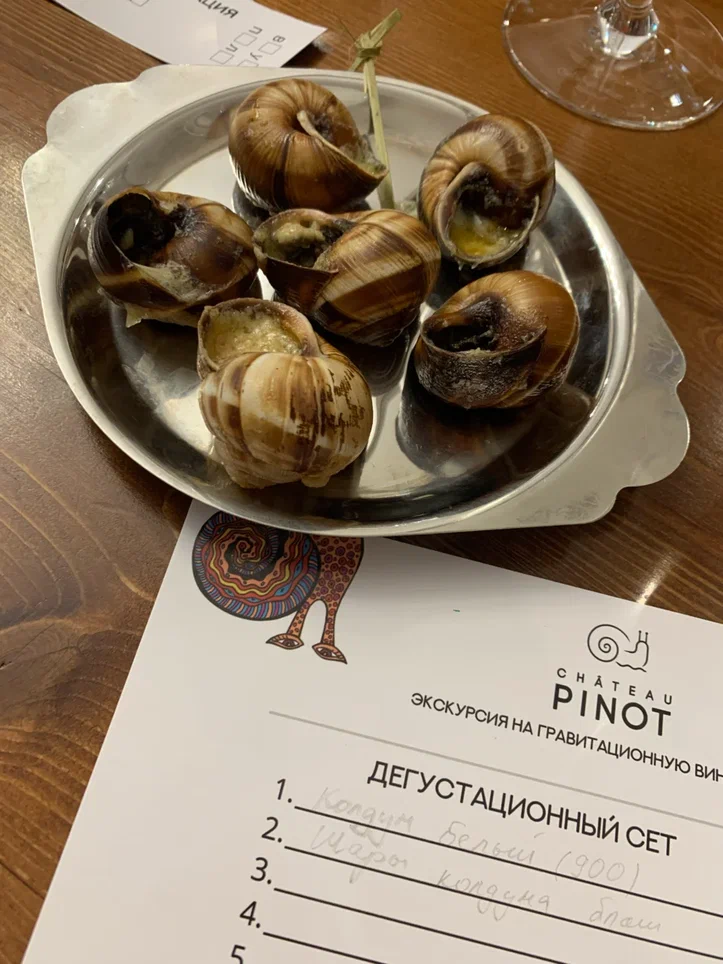
But what is most impressive about Chateau Pinot is the wine labels. So, a hunter shooting at bricks is depicted on a Pinot Noir wine bottle called The Bricks Have Arrived. The Blush Rosé wine has the label with a samurai sword that cuts through the pink fabric, and a pink drop of wine similar to blood drips out of the “wound”. A bottle of the Morskoy (Sea) wine has a label with a funny sea monster in a sailor’s striped vest and with a shell on his head.
The content of these bottles is also provocative. As the guide told us, the Game wine line stands out especially in this regard. Its creators can be called “punks” among the winemakers, since they go against the rules and are ready for any experiment in the production of wine.
Ancient traditions
The Lefkadia Valley is located in the Krymsk District. This farm is really strikingly huge. You can come here for a weekend and stay overnight. The guest house at the farm has 11 rooms, several restaurants and bars, vineyards, truffle groves, lavender fields, there is also a farm and, of course, a winery that produces several different brands of wines.
The Valley is a big wine-growing region with different soils, altitudes and microclimates.
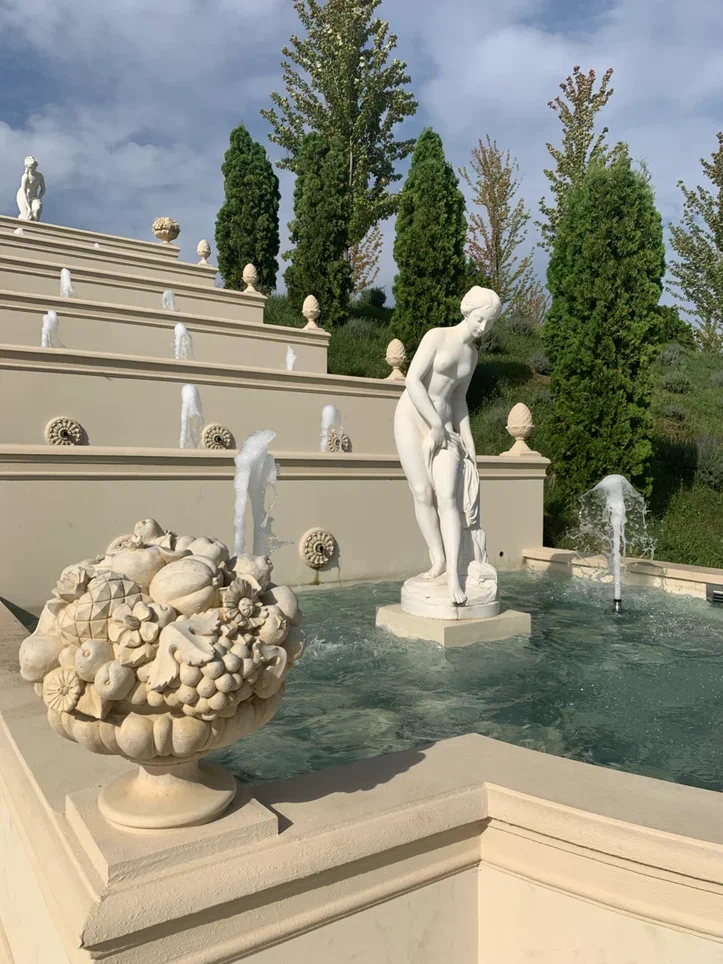
To see the farm, it is not necessary to book an excursion. The Valley has a free walking area with a re-created ancient Greek square, a viewing deck, restaurant, wine cellar, and a French garden.
Some tours are offered for those who want to visit the vineyards, plane-tree alleys, and lavender fields.
Our group was lucky. We walked through the production workshops and also had some “practice” in wine making. In the grape sorting workshop, we stood at the triage table trying to sort the ripe grapes removing leaves, twigs and rotten berries. I must say that this is a hard job, but very exciting. The workers continuously transfer the grapes onto a vibrating table. After the first sorting, the bunches enter the grape clustercomb divider. Then the grapes go back to the triage table and are sorted again.
You can also work at the winery as a volunteer. To take part in harvesting, you need to make an application and wait for invitation.
The Lefkadia Valley winery can boast of a huge number of containers for aging the grapes, with the amphorae, qvevries, as well as giant stone eggs among them. In addition, according to the chief wine expert, the farm boasts of the most equipped laboratory in Eastern Europe.
By the way, Lefkadia is even planting vineyards in the valley (turnkey projects).
Kuban “Provence”
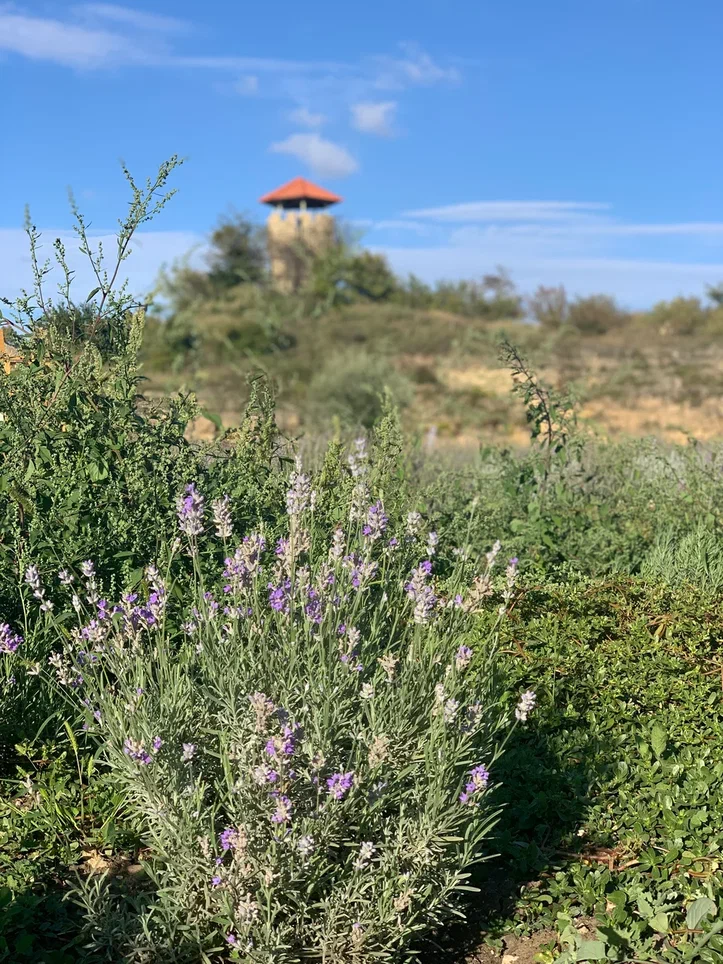
The Chateau Andre winery is located not far from here, also in the Krymsk District. The building of the winery looks like a French-style estate. The owners initially bought this land for growing medicinal herbs, but they also decided to plant grapes. And it was a good idea. The winery owner’s daughter treated our group to the wine from the family wine-vault and it turned out to be very good.
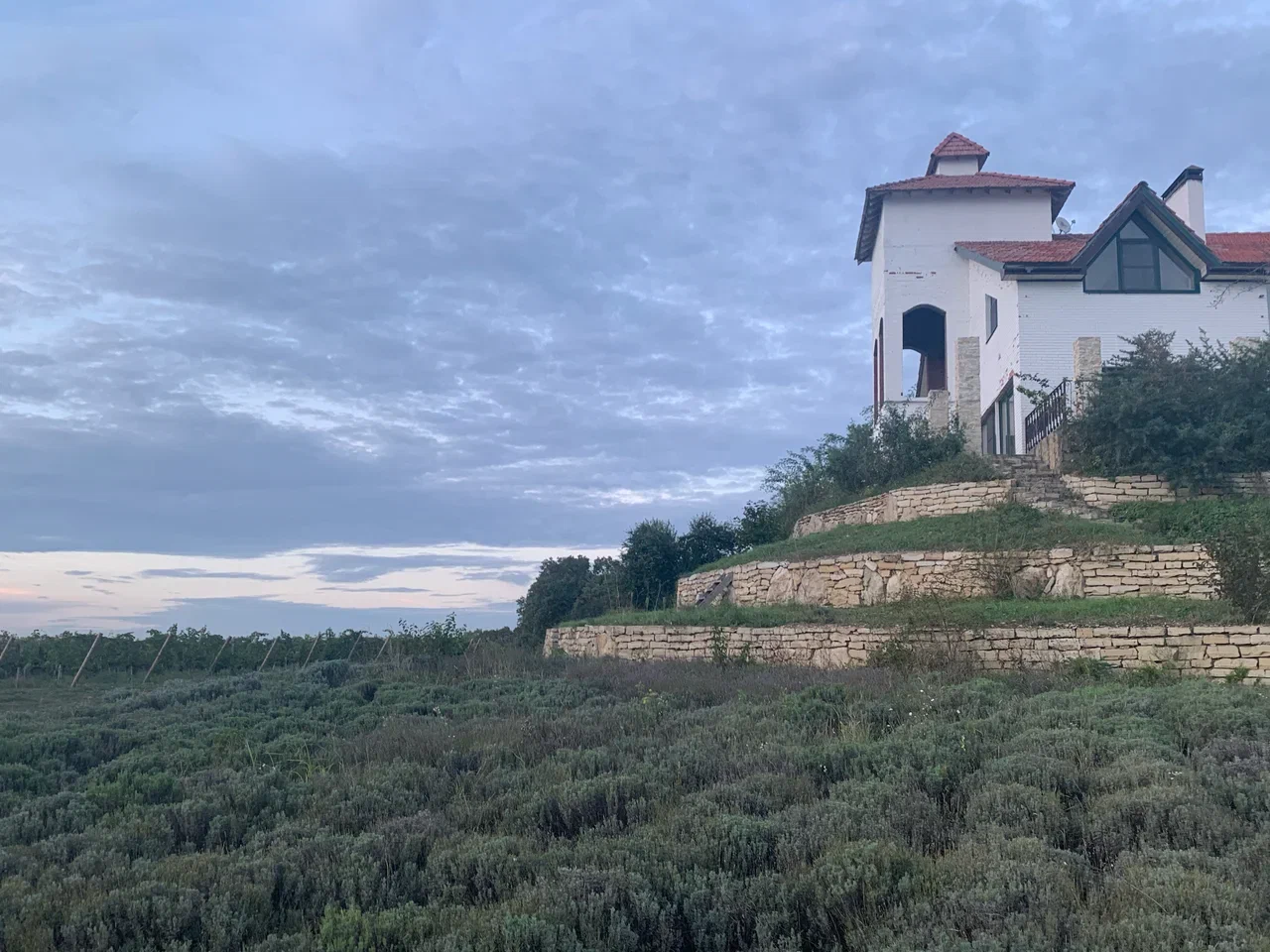
The project is currently still under construction. Within the next 2-3 years, it is planned to build a hotel and a restaurant here. Now, tourists can visit the estate by prior arrangement. The Chateau Andre hosts gourmet dinners, tastings, bachelorette parties, and other events. This year, a children’s campsite was organized here and the children could take part in harvesting.
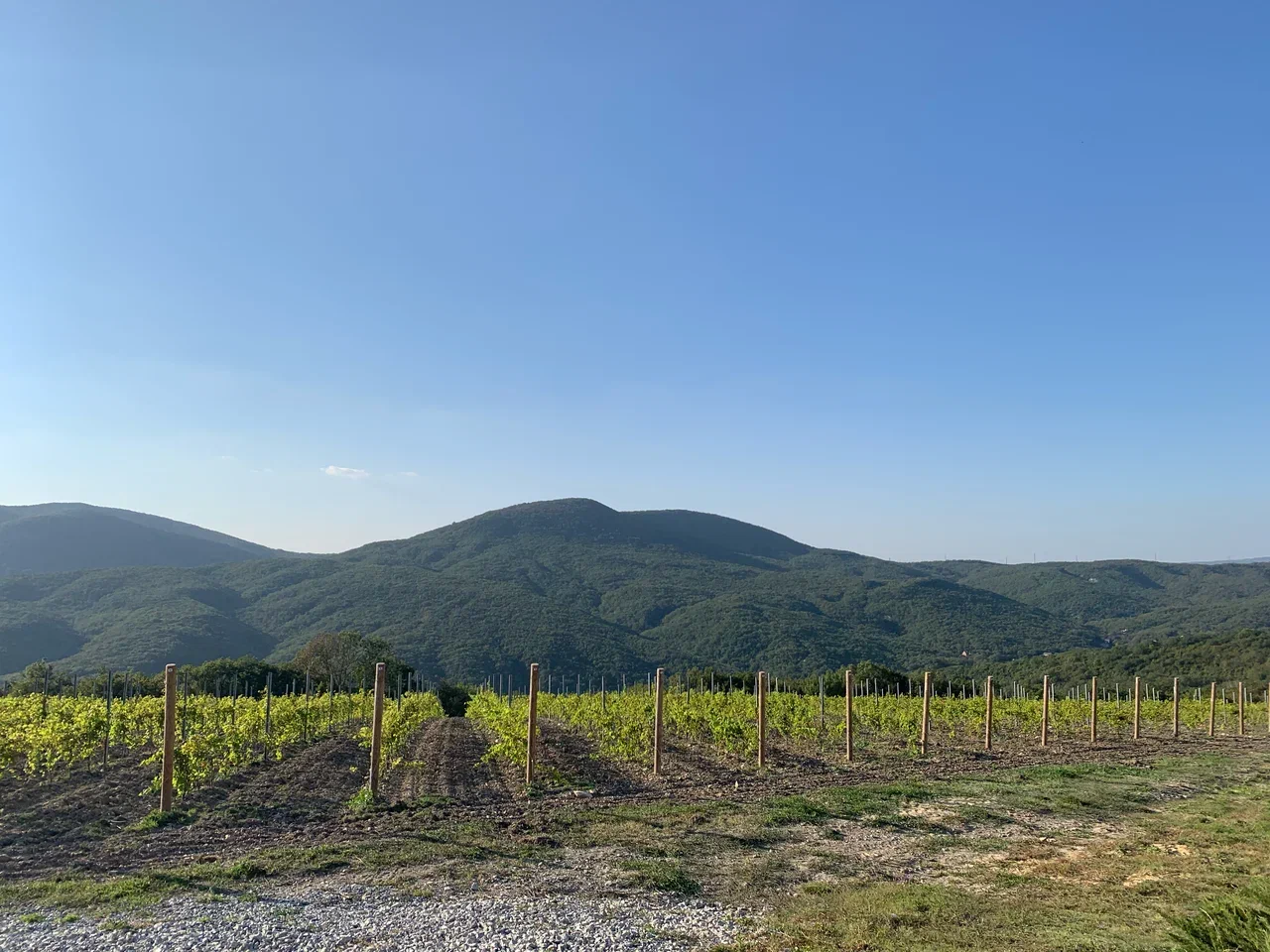
Our group came here for dinner. Just imagine that you are at the table in the courtyard of the winery admiring a sunset over the vineyards, enjoying fine wines, and relaxing in the atmosphere of a French estate. By the way, many products were made here, for example, pâté, honey, cheese.
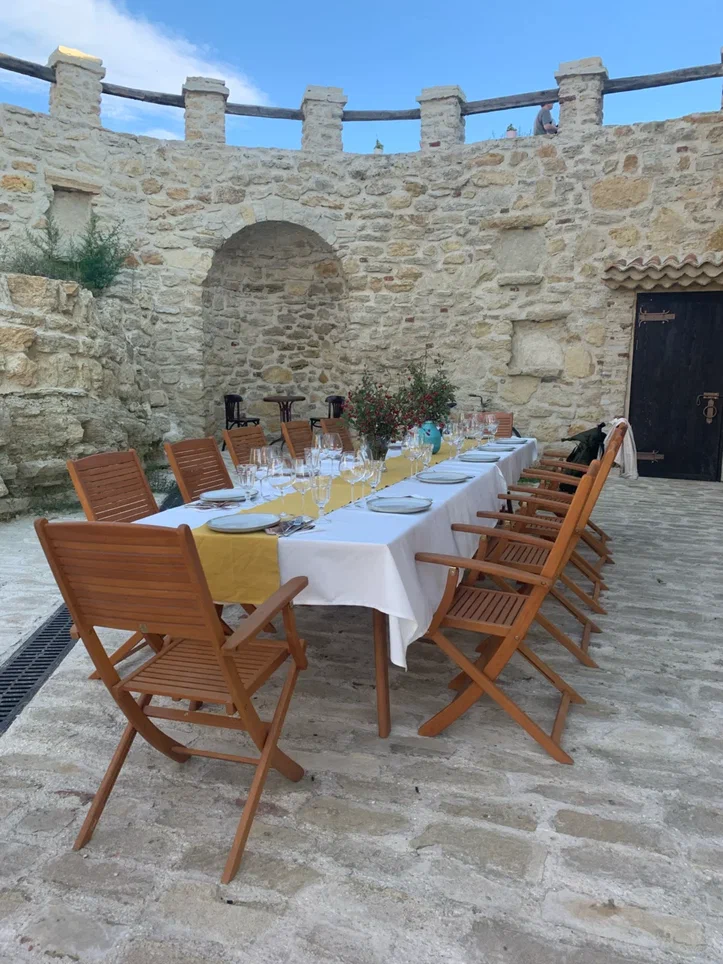
In the future, the owners of the winery plan to turn the estate into a point of attraction for tourists. They plan to build a small amusement park in the magnificent provençal style with craft shops and workshops.
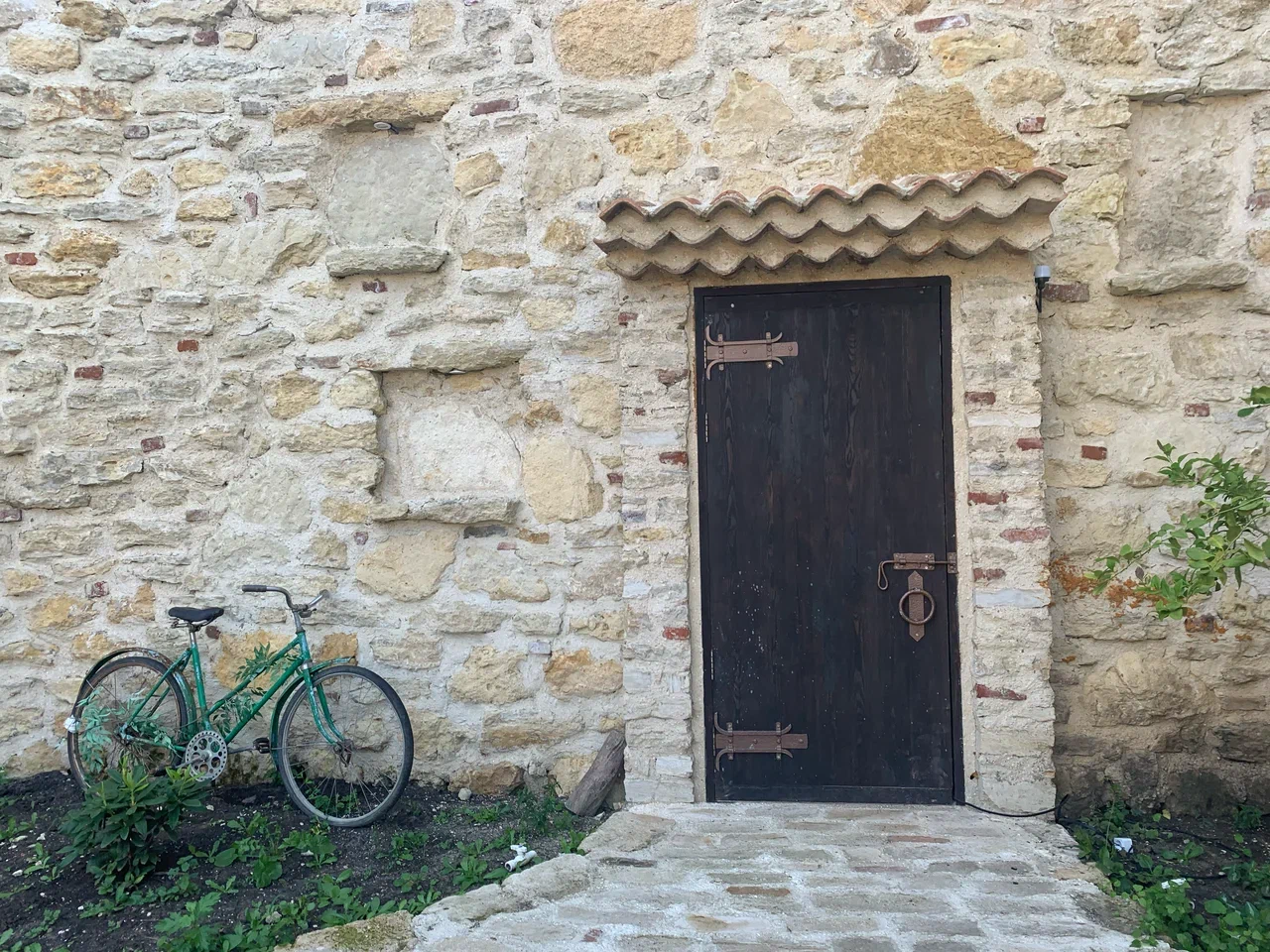
Leisure time with wine
Summing up, we must say that we had a very interesting experience. We talked to many interesting people, several persons even had taken sommelier courses earlier, so they were happy to share their knowledge and skills.

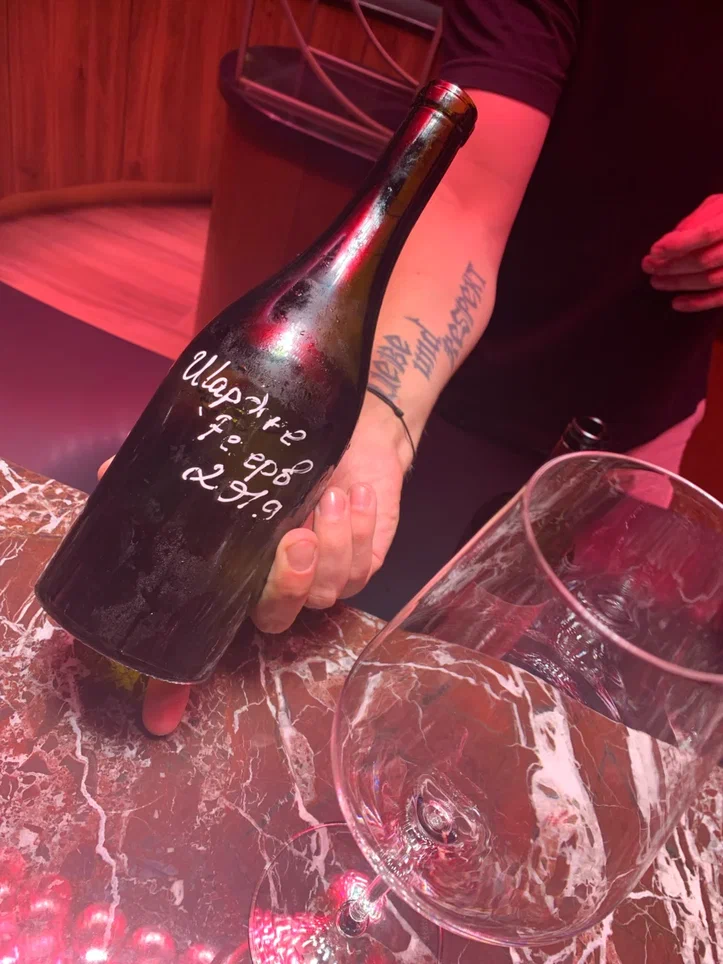
So, Russian winemaking is undoubtedly worth getting to know it better. And don’t forget about wine shopping. Almost every winery can boast of its own small shop with rather attractive prices. In Moscow, similar bottles of wine often cost twice as much, and the assortment is more modest. There is only one “negative side” of such a holiday - if you get carried away with shopping, you will have to mail your purchase home.


